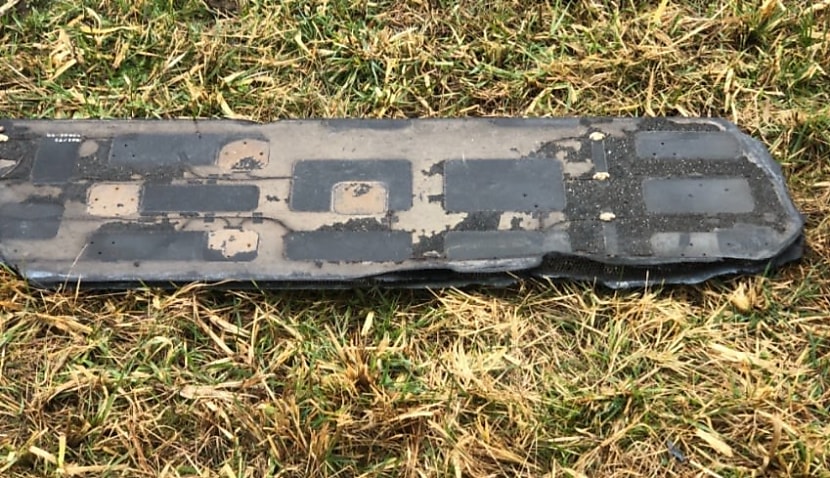
The Australian National University (ANU) researcher created international headlines when he validated the first fragment of debris in the Snowy Mountains in July, and has now confirmed a new discovery in Tumbarumba, NSW.
Tucker told the ABC the pieces form a “perfect line” that could mirror the trajectory of a SpaceX launch.
“There are more pieces that are going to be found probably further east,” he said.
“Are any of them going to be found, or are they going to be up there for years to come? We don't yet know that.”
I just came back from outside Tumbarumba, confirming a fourth piece of space junk was found from the SpaceX Crew-1 trunk. Jordan and Renee found it, and sent me a message to see if it was indeed space junk.
Credit @adrianereardonhttps://t.co/Hw1rgQpMkm pic.twitter.com/1caQ2H6Mjq— Brad Tucker (@btucker22) August 23, 2022
It comes after three separate pieces of space debris were authenticated in the Snowy Mountains, while another piece was retrieved from a beach in Yambuk, Victoria, where it had sat for over a year.
Tucker told Space Connect he wasn’t necessarily concerned about the findings and added it might not matter whether SpaceX rockets, thought to be responsible, performed a controlled re-entry or an uncontrolled re-entry like the Chinese Long March 5B rocket that landed in the Indian Ocean last week.
“We'll see. It’s kind of weird. It’s kind of controlled and kind of uncontrolled … The trunk is jettisoned by the capsule when the capsule is re-entering. What this means is that once it’s jettisoned, there is no control over it, but it is jettisoned at a very particular time. They knew where the path [of re-entry] was. It’s a bit more controlled than the Chinese rocket booster.
“And I think this just goes to show in this whole narrative, when we’re talking about space situational awareness and tracking, and plans for deorbiting satellites, even a group like SpaceX, which is obviously one of the best in terms of reusability and control, even groups like this have issues.
“Their Starlink satellites are designed to completely break apart and burn up upon re-entry. They do so much great work in this [area] and I applaud all their effort. It just goes to show that even when you’re well-intentioned and well-planned, these things still happen. It's just by the sheer volume [of material] we are sending up.”
He also said he thought the international community was trying hard to deal with the issue of dangerous space debris crashing back down to Earth.
“I think there’s a lot of great people here in Australia dealing with issues of space junk and situational awareness, from technical to government to the policy and legal side. I think this is the great thing about the Australian Space Agency and the Australian space industry as a whole. We have these opportunities to instil these best practices from the beginning.”
“I think that you can see that we (Australia) have the ability to lead and then push the global community on this, because someone has to.”
Farmer Jock Wallace was the first to discover the piece of debris in his field on 21 July after residents from the town of Dalgety heard a loud bang on 9 July.
Wallace contacted his neighbour Mick Miners, who discovered the larger piece of debris on 25 July.
The two farmers contacted several regulatory bodies, including the Civil Aviation Safety Authority, who initially advised Wallace to contact NASA. The pair eventually contacted Brad Tucker, an astrophysicist from the ANU College of Science working out of the Mount Stromlo Observatory.
Tucker travelled to the farms and provided the initial identification of the objects as space debris.
Following reports in the media of the debris, a third resident from the region reported the discovery of similar debris on their property in Moonbah.
The Australian Space Agency later confirmed the first fragment was genuine, while SpaceX also appeared to take responsibility and promised to send a team to investigate.

Adam Thorn
Adam is a journalist who has worked for more than 40 prestigious media brands in the UK and Australia. Since 2005, his varied career has included stints as a reporter, copy editor, feature writer and editor for publications as diverse as Fleet Street newspaper The Sunday Times, fashion bible Jones, media and marketing website Mumbrella as well as lifestyle magazines such as GQ, Woman’s Weekly, Men’s Health and Loaded. He joined Momentum Media in early 2020 and currently writes for Australian Aviation and World of Aviation.
Receive the latest developments and updates on Australia’s space industry direct to your inbox. Subscribe today to Space Connect here.









